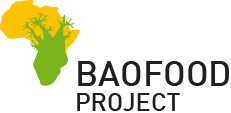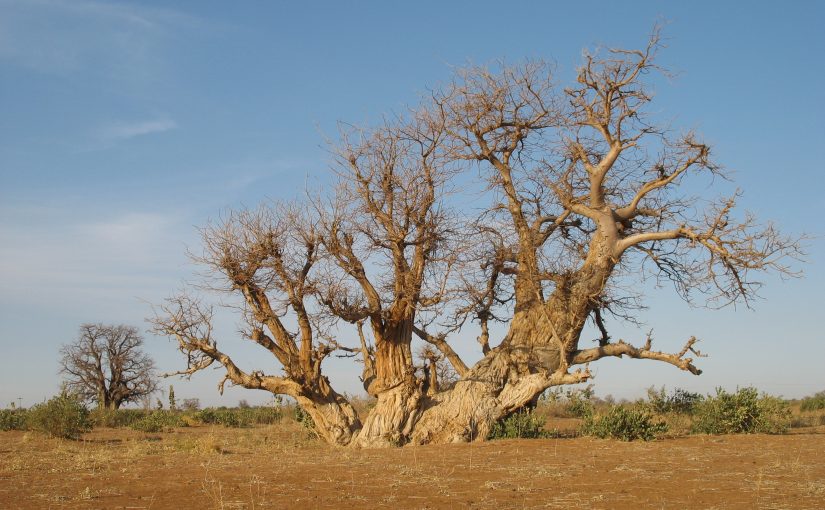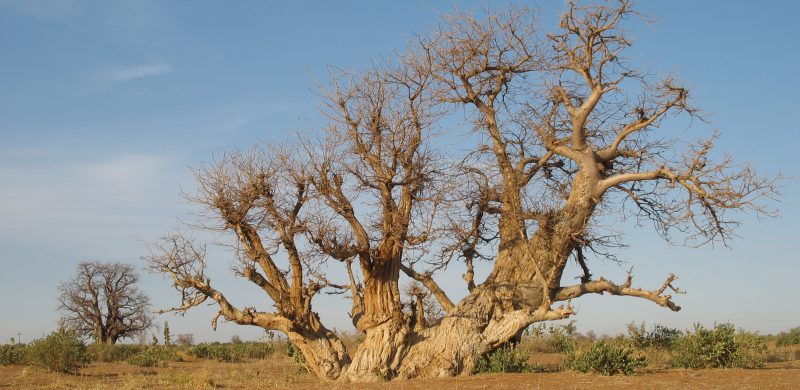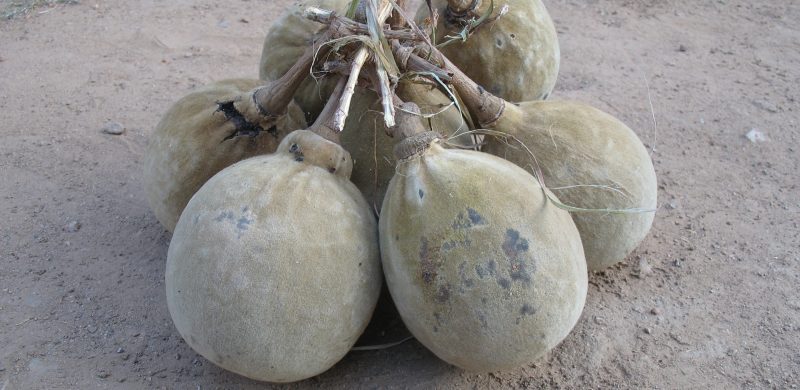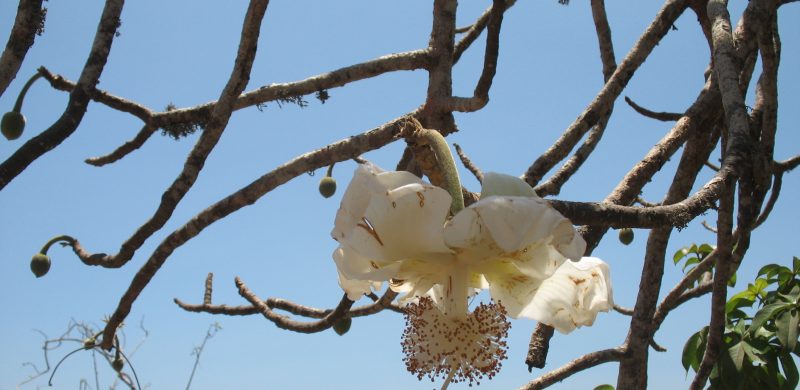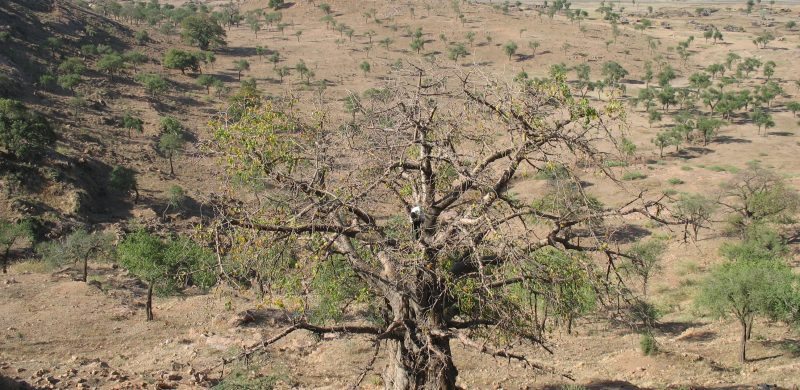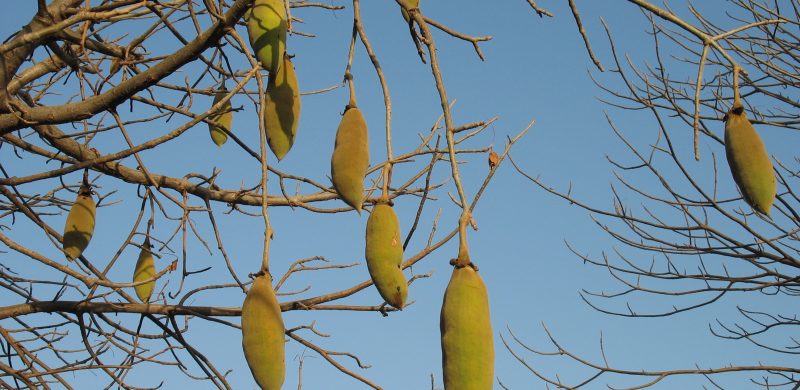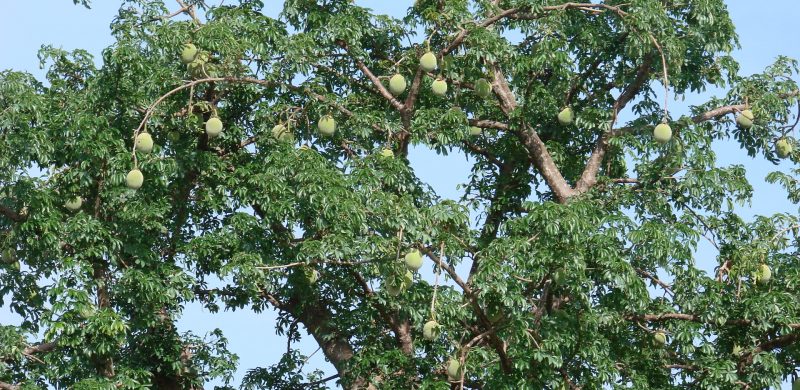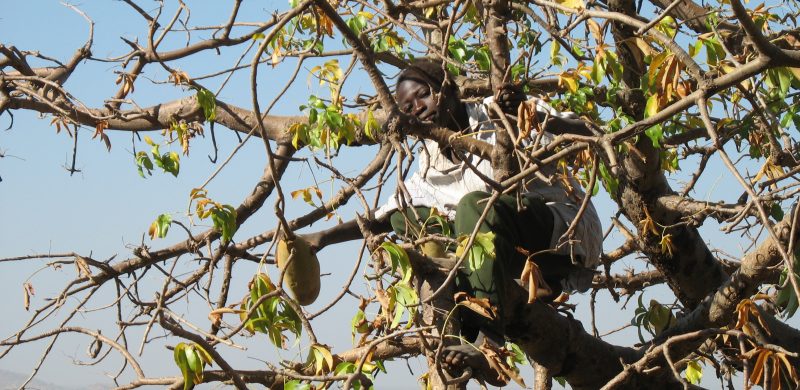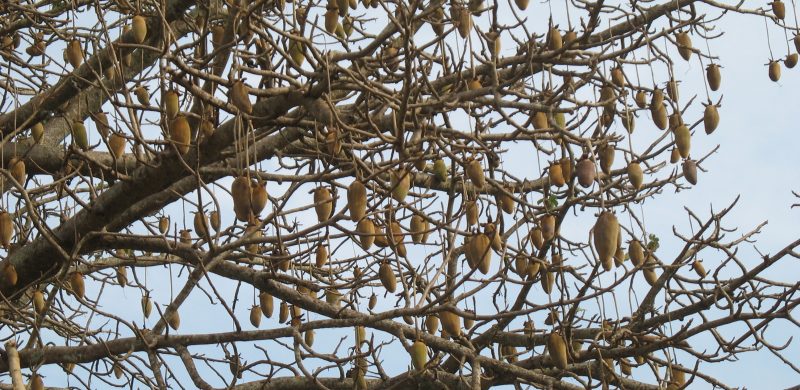The project is divided into different work packages, each with its respective objectives.
Work Package 1 — Sustainable use of baobab resources, domestication
Work Package 2 — Baobab nutrients, processing technologies, products
Work Package 3 — Human nutrition and food security
Work Package 4 — Demand, markets and value chains
Work Package 5 — Community capacity development, implementation

Work Package 1: Sustainable use of baobab resources and initiating the development of domestication technologies
Hypotheses and rationale
Several authors have observed a lack of natural regeneration of baobab in different African countries. The high morphological variability of the species (such as fruit and leaf morphology, quality, or yield) offers a potential for selecting superior populations for collection of raw products. However, little is known about baobab populations and their intra-specific diversity in Kenya and Sudan. More information is needed on potential yields and the impact of harvesting on baobab resources.
Objectives
Work under this work package aims to (a) characterize and map intra-specific diversity of baobab; (b) analyse biomass production, yields, harvest methods and intensities, and pest occurrence; (c) develop recommendations on conservation approaches and sustainable management techniques; and (d) participatory identification of elite trees and development of protocols for vegetative propagation.
Scientific methodology
Literature review, tree inventory, mapping, propagation of baobab (sexually and asexually) and maintenance of baobab trees (from different counties in Kenya) in a mini conservancy at JKUAT.
Progress beyond the state of the art
The work will improve the understanding of the role baobab can play in food security through determining harvestable volumes. The sustainable use of existing baobab populations will be promoted. The availability of elite mother trees facilitates the potential future domestication of baobab, which will reduce the pressure on the existing wild resources.

Work Package 2: Nutritional value and bio-active compounds of raw and processed baobab products and the development of nutrient-maintaining processing technologies and new products
Hypotheses and rationale
Data on nutrient content, anti-nutritional effects and bioactive compounds of different baobab parts from the region are lacking or are unreliable due to high variability, whilst the drivers behind these variations are not understood. Many traditional processing technologies exist, but there is no data on the impact of processing on nutritional value and no efforts on improving technologies for better nutrient retention. In general, commercialisation of baobab products is neglected and yet can be a high potential venture.
Objectives
Work under this work package aims to develop marketable baobab products that can contribute to improved nutrition and food security of selected rural target groups by (a) analysing the nutrient content of baobab raw and processed products; (b) reviewing and improving local processing technologies; and (c) analysing the impact of supply chain organisation on nutrient and physical properties of baobab products.
Scientific methodology
Literature review, nutrient and bioactive compounds analysis, prototype development.
Progress beyond the state of the art
The work will increase the understanding on how baobab can contribute to improved human nutrition through assessing the impact of environmental and supply chain factors on its nutrient composition. The development of nutrient-maintaining processing technologies and new marketable baobab products will contribute to reducing post-harvest losses and food insecurity through income generation.

Work Package 3: Human nutrition and food security
Hypotheses and rationale
The effect and efficiency of utilisation of baobab for human nutrition is highly variable within the research region. Traditional baobab products such as powder mixtures are commonly available in some parts of Eastern Africa, but their quality and potential impact on the nutritional and health status of consumers is unknown. Whilst in Sudan baobab is widely accepted as food it is regarded as poor people’s food in Kenya. The potential impact of increased utilisation of baobab on the nutritional status of various community groups e.g. women, children is not well investigated in the study area.
Objectives
Work under this work package aims to (a) assess the nutritional status and the role of baobab in food emergency strategies; (b) assess the purchasing power delivered from sale of baobab and its effects on nutrition security and health status of households; and (c) investigate the current and potential role of baobab in food and nutrition security.
Scientific methodology
Literature review, anthropometry, biochemical, clinical observation, survey and focus group discussions, sensory tests, observation, intervention study, analysis of nutrients and bioactive plant ingredients through HPTLC.
Progress beyond the state of the art
The work contributes to better understanding the current and potential contribution of baobab on the nutritional and health status in the target regions, and helps to assess the potential negative impacts of an increased and commercialised baobab utilisation (particularly regarding fruit pulp export) on nutrition of households in the respective areas.

Work package 4: Assessing demand, markets and value chains for baobab
Hypotheses and rationale
Indigenous fruits are rarely available on local markets in Kenya. In Sudan, the market for baobab is more developed and fruits are widely available at rural and urban markets. In either country chains depend mostly on informal structures and baobab prices are low. There is a gap between the potential of baobab for nutritional security, livelihoods and economic development and its actual contribution to both. Work under this work package will proceed in two steps: (1) understanding consumer preferences (1.a), value chains (1.b), and markets (1.c), and, (2) designing interventions that link baobab producers to markets (2.a) and change consumer perceptions of baobab products and strengthen demand (2.b ). The work package is built on the general hypothesis of understanding being the first step in developing locally appropriate pathways of change. With respect to 2.b, consumer surveys will assess prevailing consumer perceptions of baobab products and will also test alternative marketing approaches that aim at changing the perception of baobab being a poor people’s diet.
Objectives
Work under this work package aims to (a) determine rural and urban fruit consumption and purchasing patterns, customer segments and consumer preferences; (b) analyse the baobab market (structure, conduct and performance) and recommend market development and marketing strategies; and (c) analyse baobab supply chains including governance structures and quality standards, distribution of risk and economic rents; and d) identify critical points constraining the performance of baobab supply/market chains.
Scientific methodology
Work will be carried out in parallel in the two countries. In each country work will be carried out in two rural markets and the respective producer areas as well as the capital city. Steps:
- Desk study
- Mapping supply: rapid rural appraisal, transect (2 transects per rural market site), household interviews (30 interviews with specialised producers per rural market site), focus groups ( 10 focus groups per rural market site)
- Survey on environmental, economic and political framework conditions: 30 expert interviews in each country
- Trading patterns, markets and value chain survey: 40 trader and supply chain actor interviews along the chain of each rural producer area in each country
- Rural consumer survey (consumer preferences and market analysis): 2 rural markets and the respective producer areas, 150 consumer interviews for each market in each country
- Urban consumer survey: 1 urban market (Nairobi & Khartoum) with 150 consumer interviews in each country
Progress beyond the state of the art
Baobab is considered an underdeveloped crop with limited demand relative to its potential for food security and nutrition. The work will help improve the understanding of the demand for baobab products including consumer perceptions as well as baobab value chains. It will thereby contribute to the development of a locally adapted, target group specific baobab products for improved nutrition and food security. It will further contribute to understanding the process of market development for an underutilised crop and will provide recommendations for further development of the economic potential of the crop and supply chains in the two project countries.

Work Package 5: Community capacity development and implementation
Hypotheses and rationale
Baobab management and processing initiatives are scarce, and baobab products that target improved nutrition and food security do currently not exist in the study area. Knowledge and capacity of communities on sustainable baobab utilisation is low. Extension services do not promote technologies for sustainable baobab management, processing and utilisation.
Objectives
Work under this work package aims to (a) assess community capacity and initiate participatory technology development; (b) develop extension materials for various target groups; (c) conduct trainings and extension activities; and (d) establish a community-based pilot production of a sample baobab product in Kenya.
Scientific methodology
Literature review, expert interviews, survey, participatory technology development, workshops, on-site demonstration.
Progress beyond the state of the art
The work enables communities to successfully adopt sustainable baobab management and processing technologies through a locally adapted extension approach. The implementation of a pilot processing unit in Kenya will make the developed baobab products available to the community, thereby contributing to their improved nutrition and food security and, at a larger scale, demonstrating the technical feasibility and economic viability of the project.
© BAOFOOD Project 2022
